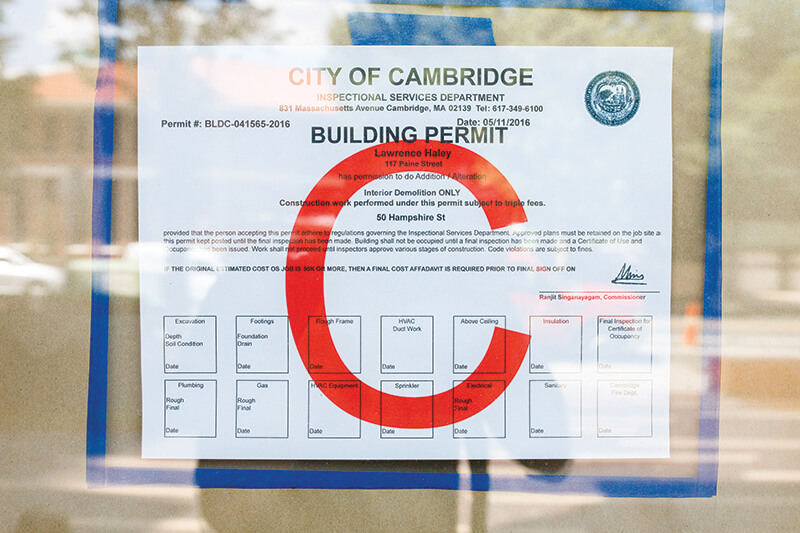Phase VI Topics

You might be thinking…
I’ve signed the lease and now I’m ready to get down to work for opening day.
How exciting! You’ve got a signed lease for your new retail space. But there is a lot of work to do before you open your doors. In this next phase, you will have to design your premises, navigate permitting in your jurisdiction, and then complete the build-out or renovation of the space.


Terms to familiarize yourself with


Pay specific attention to your responsibilities under the lease including: i) when your rent starts (Rent Commencement); ii) the period in which you are required to provide design drawings for landlord approval; iii) your obligations and timeline for filing permits with the city and other milestone dates, etc. This list will vary depending on the sophistication of the landlord and lease terms in your specific deal.
Pay specific attention to your responsibilities under the lease including: i) when your rent starts (Rent Commencement); ii) the period in which you are required to provide design drawings for landlord approval; iii) your obligations and timeline for filing permits with the city and other milestone dates, etc. This list will vary depending on the sophistication of the landlord and lease terms in your specific deal.
Team + Your Role
Team + Your Role
Architects, designers, and contractors should all collaborate and communicate together to help your vision come to life. However, it is your role to serve as the project manager — assume you will always need to direct and guide the process regardless of how good your team is. After all, this is your business — you are the conductor. You are responsible for coordinating between all parties involved to ensure information flows to the right person at the right time.
Hold a full-team project kick-off meeting to review roles, responsibilities, timeline, and budget
Schedule regular check-in meetings/calls with individual members of the team in addition to the entire team to track progress, coordinate overlapping work, and plan ahead
Regular check-ins keep the team organized, coordinated, and help you catch any time-sensitive issues that arise
Set up a system for tracking invoices and reports from your team (you will need them through the build-out phase and they may also be important down the road)
Schedule
The schedule for this phase can vary based on business type, the experience of your team, and the scope and scale of work being designed and constructed.
Typical Schedule Range:
Design
This is the stage where you rely on your design professionals, including architects and engineers, to help guide the process.
If you need Construction Drawings (sometimes known as Permit Set) showing the work you will complete as part of Tenant Improvements and using Tenant Improvements Allowance (TIA), hire an architect and sign a formal contract. The contract will detail the architect’s scope of services, timing for deliverables, costs, and more.
If you need Construction Drawings (sometimes known as Permit Set) showing the work you will complete as part of Tenant Improvements and using Tenant Improvements Allowance (TIA), hire an architect and sign a formal contract. The contract will detail the architect’s scope of services, timing for deliverables, costs, and more.
Ideally, your architect should have toured the space with you already and provided some initial feedback during the due diligence process. The drawings prepared by your architect will be reviewed and approved by your landlord and submitted to the city for your building permit, if required.
Your architect may prepare Schematic Drawings (preliminary), Design Development Drawings and Construction Drawings with details the contractor needs to accurately price and build the space. In smaller projects you might jump right to the production of Construction Drawings. The architect usually stays on throughout the build-out to ensure what’s reflected in the drawings is actually constructed. This is mostly administrative work.
Your architect may prepare Schematic Drawings (preliminary), Design Development Drawings and Construction Drawings with details the contractor needs to accurately price and build the space. In smaller projects you might jump right to the production of Construction Drawings. The architect usually stays on throughout the build-out to ensure what’s reflected in the drawings is actually constructed. This is mostly administrative work.
Your architect will usually hire/manage/oversee the engineer to provide coordinated MEP drawings for the project. The engineer is critically important to designing an efficient and functional space. Your architect will also work closely with the contractor to consider cost, quality and lead time of materials, details of constructibility, etc. This needs to be a good working relationship.
Your architect will usually hire/manage/oversee the engineer to provide coordinated MEP drawings for the project. The engineer is critically important to designing an efficient and functional space. Your architect will also work closely with the contractor to consider cost, quality and lead time of materials, details of constructibility, etc. This needs to be a good working relationship.
When should you hire an architect instead of a designer?
If you are…
…you will be required to engage a registered architect versus making your own changes, hiring a designer or deferring to your general contractor.
Due to liability issues and city rules, only registered architects can submit plans to the city for review and approval of a building permit. The architect will typically handle the permit application and city approval process with your input.
If you are…
…you may not need an architect.
Start by assessing what changes are needed to the premises to determine whether or not a licensed architect is required.
Construction
If you have a trusted general contractor (GC) that assisted you with your due diligence process, you may want to stick with them. They should provide updated pricing as you progress through your drawings and participate in regular design/construction coordination meetings.
Fairly early in the design process (Schematic or Design Development), you should get at least one or two additional construction bids from other contractors. Keep in mind, some contractors may provide lower bids, but may not have the same level of experience or ability to execute in a timely manner. You will need to compare the bids carefully and ask questions.




Ask about the type of contract your contractor uses; there are various ways construction contracts are structured, such as Guaranteed Maximum Price (GMP), Cost-Plus, or Time & Materials (T&M), though GMP pricing is very rare in the retail context. Know and understand the potential risks for cost overruns, omissions, changes you make along the way, etc.
Once you have selected a GC and the architect signed the contract, it’s time to build! If possible, visit the job site frequently and check in with your GC. Use weekly project meetings to stay updated on material changes, obstacles, delays, etc.
Also make sure to be in touch with the Landlord through the build-out period even if it is not written into the lease – things will come up and good communication with the landlord is key for getting through the construction phase and facilitating a strong long-term relationship for years to come.
Ask about the type of contract your contractor uses; there are various ways construction contracts are structured, such as Guaranteed Maximum Price (GMP), Cost-Plus, or Time & Materials (T&M), though GMP pricing is very rare in the retail context. Know and understand the potential risks for cost overruns, omissions, changes you make along the way, etc.
Once you have selected a GC and the architect signed the contract, it’s time to build! If possible, visit the job site frequently and check in with your GC. Use weekly project meetings to stay updated on material changes, obstacles, delays, etc.
Also make sure to be in touch with the Landlord through the build-out period even if it is not written into the lease – things will come up and good communication with the landlord is key for getting through the construction phase and facilitating a strong long-term relationship for years to come.

